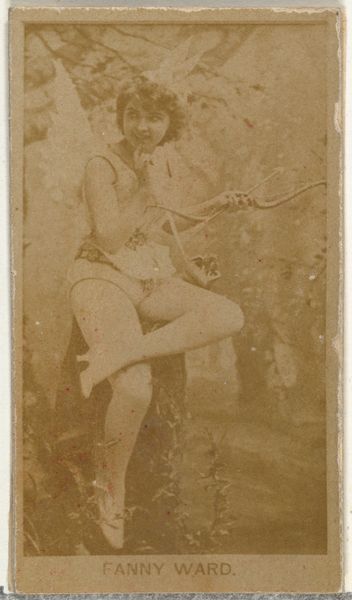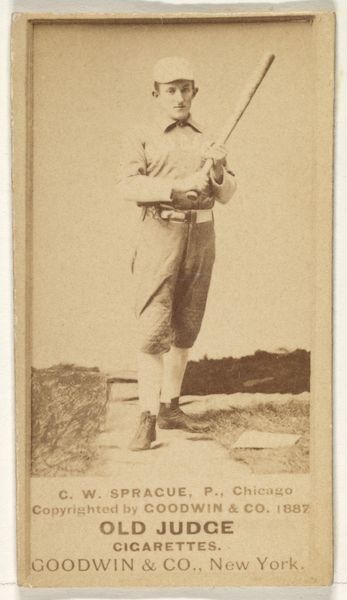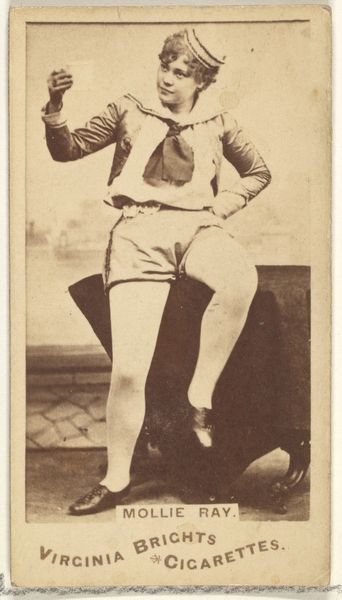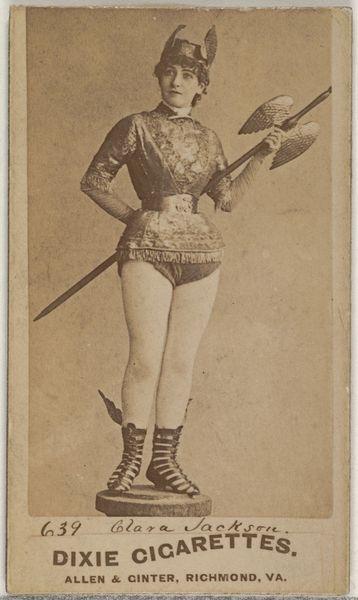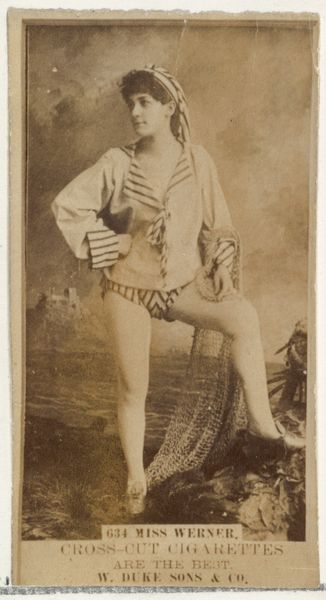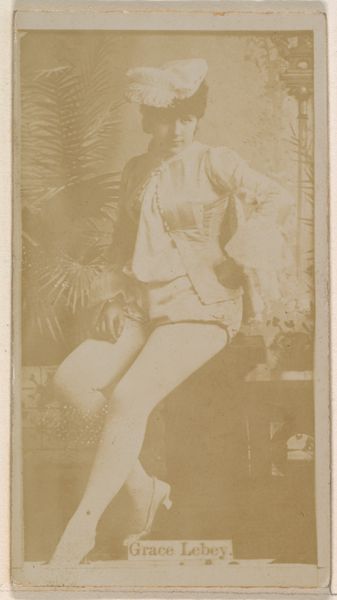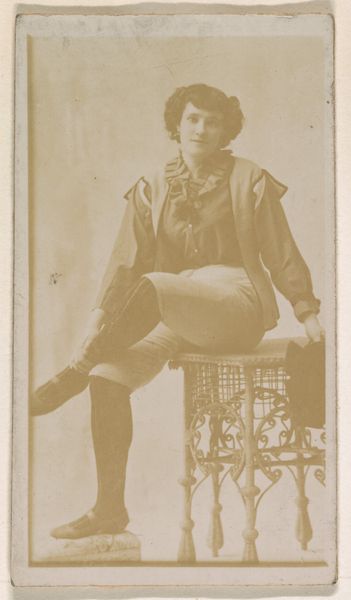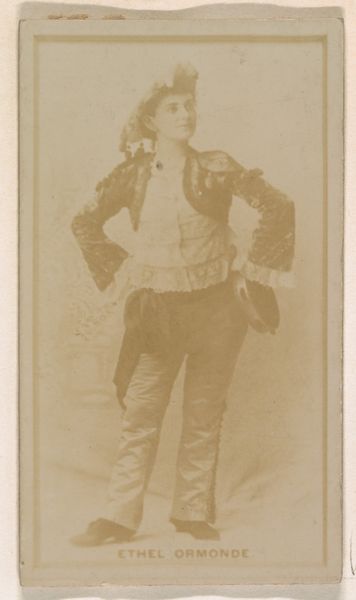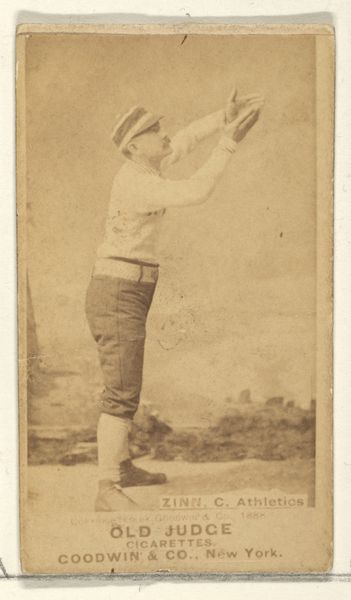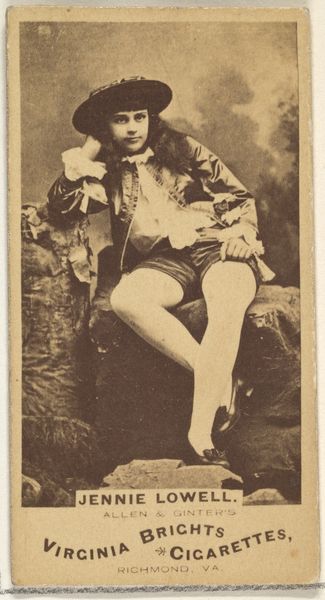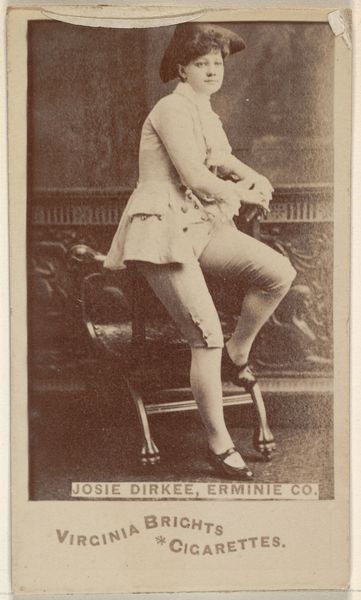
Ringo, a Palestinian resistant. Studio Shehrazade, Saida, Lebanon, 1968-72. Hashem el Madani 2007
0:00
0:00
Dimensions: image: 291 x 292 mm
Copyright: © Akram Zaatari, courtesy Hashem el Madani and Arab Image Foundation, Beirut | CC-BY-NC-ND 4.0 DEED, Photo: Tate
Editor: This photograph, "Ringo, a Palestinian resistant," taken between 1968 and 1972 by Hashem el Madani, is quite striking. The man's stance, juxtaposed with the studio setting, feels very staged. What can you tell me about its context? Curator: This image, re-photographed by Akram Zaatari, speaks volumes about the performance of identity and resistance. Consider the subject, "Ringo," posing with a weapon in a studio—how does this challenge our ideas about authenticity and the representation of Palestinian resistance? Editor: It makes me question the narrative. Is it glorifying or complicating the idea of armed struggle? Curator: Precisely. It invites us to consider how images are constructed and circulated, particularly in relation to power, politics, and cultural memory. It's a window into how identity is both performed and perceived. Editor: So, it's not just a portrait, but a commentary on the construction of a revolutionary image? Curator: Exactly! It pushes us to think critically about the role of photography in shaping our understanding of conflict and identity.
Comments
tate 8 months ago
⋮
http://www.tate.org.uk/art/artworks/zaatari-ringo-a-palestinian-resistant-studio-shehrazade-saida-lebanon-1968-72-hashem-el-p79463
Join the conversation
Join millions of artists and users on Artera today and experience the ultimate creative platform.
tate 8 months ago
⋮
This work is one of a series of black and white silver gelatin photographs of varying sizes that are collectively titled Objects of study/The archive of studio Shehrazade/Hashem el Madani/Studio Practices. All of the photographs were taken by the Lebanese commercial photographer Hashem el Madani between 1948 and 1982 and compiled into the present group, 117 of which are in Tate’s collection, by the Lebanese artist Akram Zaatari. All of the photographs include people, either alone, in pairs or in small groups, and most were taken in Madani’s studio, although some were shot outside and in his subjects’ homes. The series features men and women and covers a wide age range from babies to elderly people. Almost all of the sitters assume poses deliberately for the camera, sometimes accompanied by props or costumes, and most gaze directly towards the lens. Many of the pictures show subjects interacting in various ways, including embracing, kissing and acting out scenes, such as a mock wrestling match. The photographs are mostly tightly cropped, with the sitter or sitters filling most of the frame, although in some cases the figures are positioned further away from the camera, for instance when shown sitting at a table or standing behind a chair. The photographs tend to have sparse backgrounds, often dominated by a blank posterior wall. They are mounted on white paper, displayed in plain white frames and signed on the back by Madani. Many of them have been organised into categories by Zaatari – such as a group featuring men dressed as Syrian resistance fighters and a collection depicting newly married couples – while the rest are presented individually. Zaatari has stated that although he prefers these groups to be displayed together, this is not a requirement (Akram Zaatari, email to Rachel Taylor, 24 April 2008, Tate Acquisition file).


